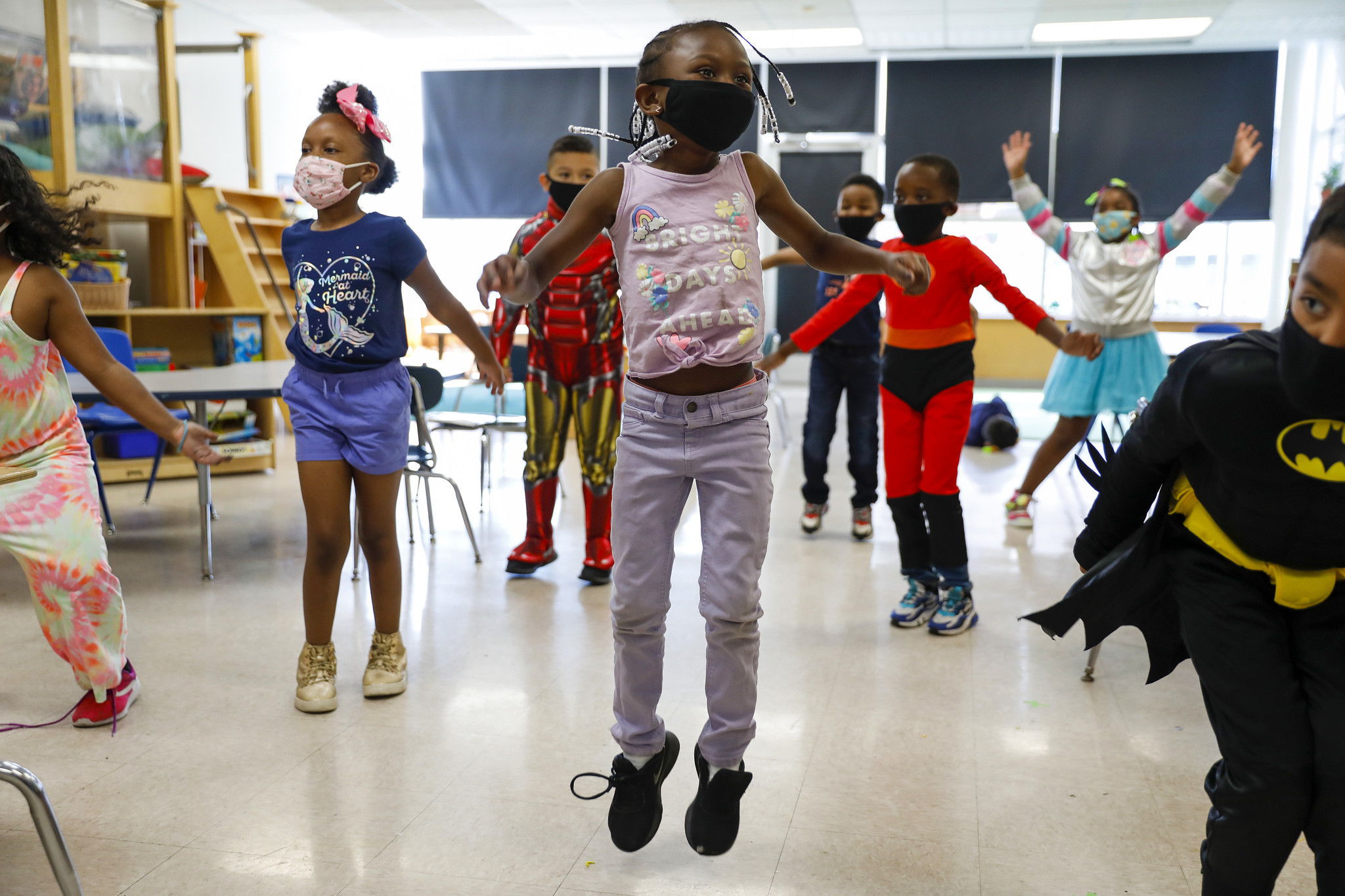Series: About Early Math
Early Childhood Teachers Look Back on a Year Like No Other

The year 2020 has been a year like no other! As the year comes to a close, we want to acknowledge the tremendous work by early childhood teachers to quickly shift their programs and educational practices—all while caring for their own families and loved ones. As truly essential workers, these preschool teachers responded by learning new technology and teaching virtually for the very first time as well as responding to new health guidelines for in-person programming.
The Collaborative interviewed three Chicago-area early childhood teachers who spoke honestly about the challenges and rewards of teaching during the pandemic. At the start of the pandemic in March, all three preschools closed in-person services.
Donely, who teaches in the Edgewater neighborhood of Chicago, quickly learned how to connect with Zoom despite never having used this technology before. However, he soon realized this wasn’t meeting the needs of families at his center. “In my class, the parents are working from home and don’t want to be distracted. I know parents were starting to hire babysitters while they were working.” Donely really missed his students and felt frustrated he couldn’t do more to support their families and engage his young learners. “I didn’t know what to do [about the 10 kids who didn’t join]. I tried my best to get the families to participate.”
I want people to understand that our job is not easy. It’s not just babysitting. If the kids are learning and the parents are seeing this, that tells me I’m doing a good job. – Donely
In the suburb of Evanston, Gail had another challenge when she tried virtual story-time, songs, and dance. “Parents just really didn’t understand the preschool perspective and what kids are learning from play. Some families wanted more paper-and-pencil type things like their other kids were doing.”
The third teacher we interviewed, Beth, teaches at a private school in the Near North neighborhood. She noticed a “split between two parent working families and the families that have a parent or other adult that stays home with the child or children.” These two types of families had very different needs. Parents who were busy with their own work schedule had a hard time joining scheduled calls while other families were looking for a more structured schedule that followed school routines. “So, that’s where we tried to find a balance of live video times and recorded things. That way if a child couldn’t make a meeting, they were still getting some of the content and information.”
As summer faded and the school year began, these three preschools re-opened and welcomed children back to their schools. The adults fretted over all the new safety protocols, but the children have been resilient.

Credit: Chicago Tribune
Gail in Evanston shared with us, “You’d be surprised. Kids seem to get used to almost anything. We adults have had to change our routines.” While her students are very delighted to be back in school even with these restrictions, she has noticed that adults’ anxiety can transfer to children. “Maybe when the children are challenging with us, it’s because they feel this stress. The children pick it up from the adults around them. But otherwise, the children adapt and just accept these new rules and routines.”
Beth noticed similar trends in her Near North preschool, “Things have changed on a month-to-month basis and so really it kind of just teaches you to go with the flow. One thing that we’ve said all along is that the kids have taken really well to what school is like this year.” Her school limits the number of people in the building and had to implement a new morning arrival. Beth asked herself, “‘How is a three-year-old going to handle a car drop off?’ Well, all of them just walk happily into the door.” As we know, young children often use play to help make sense of the world around them. Beth has seen this happening in her classroom. “In our dramatic play area, we have baby dolls. We have diapers and little hats for them. And the kids asked, ‘Where are their masks?’ and I thought, ‘Oh I should make some of those for them!’”
Despite all the changes, math learning is still happening. We know that math is all around us, and that hasn’t changed. In fact, these teachers have discovered new opportunities.
Beth incorporates math into her morning meeting each day. “The children help us solve a math problem. I love when the parents come along [and join us for virtual lessons] because they get to see how we’re talking about math. I hope they are listening to the language that we’re using and replicating that at home too.”
Donely also turned a challenge into an opportunity. His classroom can no longer play on the neighborhood playground, so they take more walks around the park and down the street. This allows lots of time for fitting math in along the way. “My kids are counting how many steps they are taking. And when we go down the street, they started recognizing numbers on the houses. They might also say, ‘Look that tree is bigger than this tree.’ They are visually measuring.”
When we’re virtually learning, it makes parents feel nervous like they’re missing out on things we could do in the classroom. There’s so much in everyday activities that your child can learn from. – Beth
Beth couldn’t agree more about the joy of informal learning. She told us about a recent Zoom meeting when the class made playdough cookies together. While they were making their cookies and adding pretend sprinkles, she would say “How many sprinkles did you put on your cookie?” and “Who has the same number of sprinkles?” Beth describes her goal, “It’s letting them play and pulling out those concepts as they come out naturally. It doesn’t have to be that every lesson is a formal math lesson. It is really giving kids different materials and talking with them about what they’re doing. So much of their play IS math.”
There are other silver linings that make teaching rewarding for these educators. Gail recognizes new ways to partner with families. “I’m finding communication with the parents has improved because I am really thinking about what the children are doing all week.” Beth has learned to cherish times when she is together with her students in person. “Every week, it kind of felt like we didn’t know how many weeks we were going to be together. So, knowing that we might not see them, it makes you enjoy every moment a little bit more.”
A special thank you to Beth, Donely, and Gail for their time and willingness to share their experiences. Hearing directly from these teachers gives us hope for the future, no matter what 2021 brings.